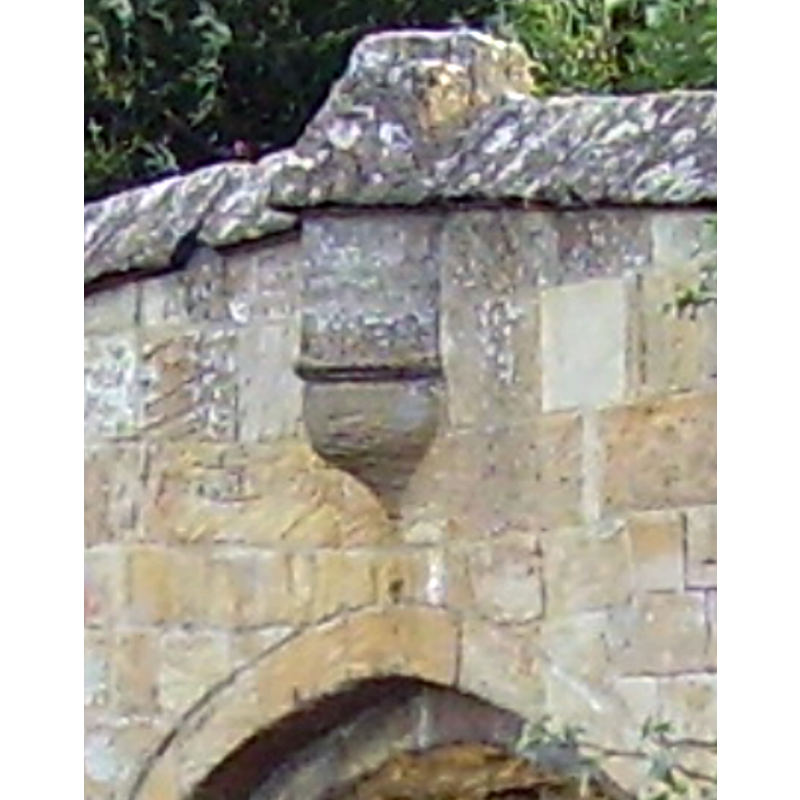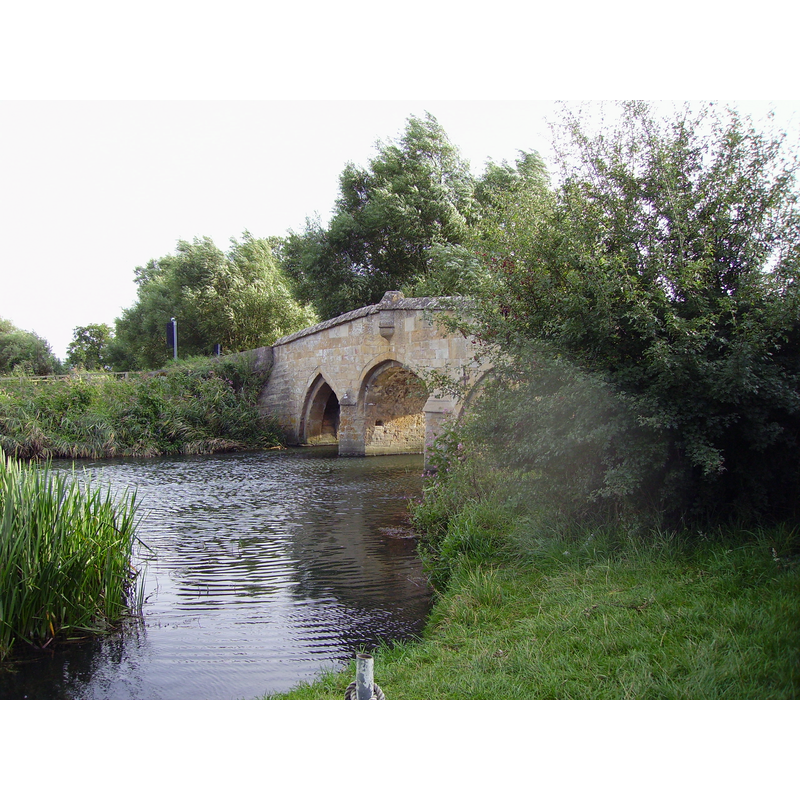Radcot / Radcutt

Image copyright © Ballista, 2006
CC-BY-SA-3.0
Results: 2 records
information
Scene Description: View of the medieval bridge at Radcot. The Victoria County History (Oxon., vol. 17, 2012) notes: "A tradition that baptisms continued after the chapel's destruction in the 17th century, with the socket for a statue or cross on the central arch of Radcot Bridge serving as a font, lacks any corroborating evidence."
Copyright Statement: Image copyright © Ballista, 2006
Image Source: digital photograph taken 28 August 2006 by Ballista [https://commons.wikimedia.org/wiki/File:Radcot_Bridge.JPG] [accessed 24 January 2018]
Copyright Instructions: CC-BY-SA-3.0
information
Scene Description: View of a detail of the medieval bridge at Radcot. The Victoria County History (Oxon., vol. 17, 2012) notes: "A tradition that baptisms continued after the chapel's destruction in the 17th century, with the socket for a statue or cross on the central arch of Radcot Bridge serving as a font, lacks any corroborating evidence."
Copyright Statement: Image copyright © Ballista, 2006
Image Source: eited detail of a digital photograph taken 28 August 2006 by Ballista [https://commons.wikimedia.org/wiki/File:Radcot_Bridge.JPG] [accessed 24 January 2018]
Copyright Instructions: CC-BY-SA-3.0
INFORMATION
FontID: 21603RAD
Object Type: Baptismal Font1?
Church/Chapel: St. James Chapel [disappeared]
Church Patron Saints: St. James
Church Location: Radcot, Bampton, Oxfordshire OX18 2SX, UK
Country Name: England
Location: Oxfordshire, South East
Directions to Site: Located off the A4095, 3 km SW of Bampton, 4 km N of Faringdon, 7 km E of Lechlade
Ecclesiastic Region: Diocese of Oxford
Historical Region: Cotswolds
Century and Period: 12th century, Medieval
Font Notes:
Click to view
No entry found for Radcot in the Domesday survey. The Victoria County History (Oxon., vol. 17, 2012) notes: "The tiny hamlet of Radcot [...] in the earlier Middle Ages it was considerably larger, but probably never contained more than around 35 households [...] In the 11th century Radcot was presumably served from the mother church at Langford. [...] A parochial chapel within the castle's earthworks, close to their south-east corner, was probably established in the 12th century: possibly it was built or rebuilt by the Bucklands after the castle's surrender in 1142, and it was presumably one of the (unnamed) chapels of Langford mentioned in 1163. [...] Excavation has revealed a three-cell apsidal chapel of typical 12th-century form [...] Like the chapel at Little Faringdon, Radcot chapel may have had baptismal rights from its foundation [...] The chapel's dedication to St James was mentioned in 1424 [...] The fortifications subsequently thrown up during the Civil War surrounded the chapel, which may have been intentionally demolished for its stone: certainly it was destroyed around that time, and the footings were very thoroughly robbed. [...] If so, the fact that it was already closed up perhaps contributed to the decision. Any remains were apparently removed by 1664–5 [...] A tradition that baptisms continued after the chapel's destruction in the 17th century, with the socket for a statue or cross on the central arch of Radcot Bridge serving as a font, lacks any corroborating evidence."
COORDINATES
UTM: 30U 597549 5727846
